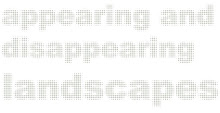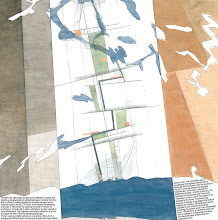 The Europan Norway catalogue is now available, edited by Øystein Rø and Espen Røyseland at 0047.
The Europan Norway catalogue is now available, edited by Øystein Rø and Espen Røyseland at 0047.
Buy it here and learn all about the awarded projects at norwegian sites, prize winning norwegian projects in Switzerland and the Czech Republic, and read texts by Sabine Müller, Knut Eirik Dahl, Erlend Seilskjær, Hilde Bøkestad, Espen Røyseland, Øystein Rø, Trude Lund, Maximilian Martinenghi, Kristine Jensen and others.
ALL THE BEAUTIFUL PROJECTS
Knut Eirik Dahl President,
Europan Norway
Europan Norway is solidly present in development processes in 11 Norwegian cities. At the Europan 9 Award ceremony in DogA in January, the Minister of Local Government and Regional Development, Mrs Magnhild Meltveit Kleppa, commented on Europan’s significance for Norway in the following manner:
” In modern societies, of course, politicians and architects interact and influence one another. To be sure, through our subsidiary body, Husbanken,[1] The Ministry of Local Government and Regional Development is a sponsor of the Europan organisation. We sincerely cherish the opportunity to do so.”
In his presentation at the same arrangement, the leader of the Committee for Urban Development in Oslo, Ola Elvestuen, confirmed the possible importance of Europan in the future development of Oslo.
It is a fact that the continued support of the Norwegian State Housing Bank, centrally as well as regionally, from Europan 7 onwards, has been decisive in the establishment of Europan. In many ways The Norwegian State Housing Bank has considered Europan ”their own” laboratory for urban research. It is important for the continued life of Europan, as an opening for young experimental architects, that the national support is carried on.
The broader challenge
At the awards ceremony the Minister launched the five-year program “Cities for the Future” in collaboration with several larger Norwegian cities, which she considers of particular importance in a perspective of sustainability. She ended her presentation as follows:
”By implication, architects are crucial when we get down to the practical task of improving the sustainability of cities. That is why it is so important that all young architects seek to acquire knowledge on the subject of sustainability and what is required in their field of work. Experiences need to be shared and know-how about novel solutions spread if we are to make headway and secure further progress. The activity of Europan contributes to the impartation of such vital knowledge”.
The theme of Europan 9 was “Sustainable cities and new urban spaces” – and many of the projects have aimed to address this line of questioning. Moreover, it is plausible that ECO-Box, Europan’s advisor in E9, as in future projects, considers many of these entries more as preparatory exercises for learning to understand, than as projects and ideas that automatically will lead to significant changes.
We must nevertheless consider the entries of Europan 9 as contributions to an interesting future cartography on aspects of a sustainable community. Several of the texts accompanying the projects in this Europan catalogue are optimistically displaying and investigating a new terminology in their quest for a new understanding. There can be no doubt that a new, sometimes domineering explorative field will delineate itself also in Europan 10.
New arenas are being developed
The international fora Europan has arranged across Europe bring together planners, politicians, developers and architects from the various European cities. Nationally, Europan Norway has set up several fora to create a mutual dialogue between the participating cities in the process. Oslo School of Architecture and Design (AHO) has created a new arena for Europan by arranging lectures and a series of debates where the Europan winners in Norway are presented and debated at afternoon seminars. A new element of the year was that one of the school’s theoreticians, Christian Hermansen, was invited to comment on the projects. The latter model should be applied by Europan to create a team of critics and experts on the Europan concept. Present at the seminars were also representatives from the participating cities who thus are offered an opportunity to experience discussions on architecture and urbanism from different angles. In April I attended the Lillestrøm arrangement where two young architects (Mateo/Martinenghi, Spain/Italy) presented their project with Pollock, Bosch and the nomad crossing the desert as “backdrop” for their ideas. They also showed three of their former Europan entries and opened up for a whole auditorium of students to gaze into Europan’s continuous laboratory of experiments. In a phase of the discussion around the project one of the Spanish winners claimed that: “all good teachers are dead!” A claim that, if nothing else, can be seen as an assertion that nowadays we all have to think anew.
After the seminar the winners left with Europan for a two-day workshop at Lillestrøm, before returning to Madrid with promise of their first assignment in Norway. A corresponding process started at AHO the following day upon which the German Winner (Müller, Flores and Izquierdo) returned to Berlin with a commission for a master plan of the Grorud area.
Borders are crossed and doors are being opened
Europan’s main project is to open doors for young architects wanting to straddle borders. In this catalogue we present Norwegian winners in Sion in Switzerland (Grønn/Lyngner/Brynhildsvoll) and the Norwegian based winners in Prague (Prins/Müller). The Norwegian winner of Europan 8 in Vienna (Mujezinovic) recently reported that he has been asked to continue work on his project. Europan Norway is very pleased with such Norwegian “exports”.
At the same time former Europan winners are active in Norway. The winners of Europan 7 at Økern in Oslo, have developed this project further in collaboration with EBY and the municipality of Oslo. The victory in this competition facilitated the participation of the winning team in the competition of the center of Økern, which they won (Ghilardi/Hellsten with Spacegroup). The winners in Åsane in Europan 8, Lars Brendrup and Transform, were invited to the competition of the river area in the city centre of Porsgrunn and won first prize here, with a larger team. There are thus several good stories in the Europan narrative.
Europan, the cities and realization
The Europan winners and the participating cities take time to develop their ideas, thus the projects change content, form and direction along the way. For this there are many reasons; one is that the areas of study are relatively large and involve several time consuming processes. Another reason may be the lack of precision in the programmes; a third is that there may be a gap between project and expectations.
A lesson for Europan is that in Europan 10 we should make agreements with municipalities and developers about what can be realized relatively fast, so as to find “what can become real” along shorter timelines. I find that some kind of faster visibility must be achieved for the sites following longer lines of development, so that “Europan was here” can be read as a real project. It is therefore very uplifting to hear that the Spanish winners of Europan 9 in Trondheim (Murado, Elvira, Krahe and more) are about to sign the contract to design their student-housing concept at Elgesæther. They have entered into collaboration with Pir II, which includes Spanish-speaking architects, and the regulation process has already been announced!
In the end of May at Santiago de Compostella Europan’s “Forum of Results” will meet. This arrangement gathers winners, representatives from the cities involved and experts. The realization of the winning project in Europan 8 at Hamar (Salcedo/Brossa, Spain) is one of the examples to be discussed. The Mayor of Hamar, Einar Busterud, leading a sizeable delegation will attend this event. In other words, realization is a challenging field for the cities, the winners and Europan itself, and now there is cause for more optimism.
In good hands
Europan’s leadership is being renewed. The two new secretaries of Europan are Øystein Rø (29) and Espen Røyseland (30) from the project space 0047. As students in Berlin in 2004 they started the gallery 0047, a place which became important for the dialogue between Norwegian and German art and architecture. 0047 are now located in generous industrial quarters at Grønland, in Oslo. Rø and Røyseland focus on developing research projects, including an ongoing border crossing project between Russia and Norway. The catalogue for Europan 9 has been produced by these two and they will be driving forces behind the development of Europan 10.
During my years in Europan with Cornelius Brekke we had the great pleasure to enter into each other’s texts to renew Europan as a concept. This small introductory text has Cornelius in mind.
Tuesday, May 20, 2008
europan 9 catalogue
Labels: Europan, in english, publication
Subscribe to:
Post Comments (Atom)





















No comments:
Post a Comment